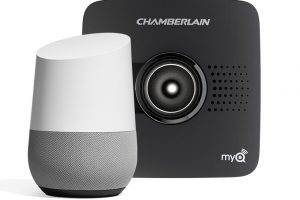Are you ready to take your home to the next level of convenience and efficiency? By connecting your smart home devices to voice assistants like Amazon Alexa or Google Assistant, you can control your lights, thermostat, security system, and more with simple voice commands. No more fumbling with apps or remotes – just speak and your smart home will respond instantly. In this guide, we’ll walk you through the simple steps to connect your smart home devices to voice assistants, so you can enjoy the seamless integration of technology in your daily life.
Key Takeaways:
- Convenience: Connecting smart home devices to voice assistants can greatly increase the convenience in managing and controlling your home automation.
- Compatibility: Ensure that your smart home devices are compatible with your chosen voice assistant to avoid any potential connectivity issues.
- Setup Process: Follow the specific setup process for each smart device and voice assistant to ensure seamless integration and operation.
- Voice Commands: Learn and utilise the various voice commands available for your smart home devices to fully maximise the convenience and efficiency of using voice assistants.
- Security: Be mindful of the security measures and privacy settings when connecting smart home devices to voice assistants to protect your personal data and ensure a secure smart home environment.
Preparing for Setup
Before you embark on setting up your smart home devices with a voice assistant, there are a few important steps you need to take to ensure a smooth and successful process. Whether you’re connecting your smart lights, security system, or thermostat, being prepared will save you time and frustration in the long run.
Ensuring Device Compatibility
When preparing to connect your smart home devices to a voice assistant, it’s essential to ensure that the devices are compatible with the voice assistant platform you plan to use. Check the list of supported devices for your chosen voice assistant, and make sure that all the smart devices you want to connect are compatible. This will prevent any issues or limitations once you start the setup process.
Essential Tips Before You Begin
Prior to starting the setup process, there are a few essential tips that will help you have a seamless experience. Firstly, update the firmware of your smart devices to the latest version to ensure compatibility with the voice assistant. Secondly, ensure that your Wi-Fi network is stable and has a strong signal throughout your home to avoid any connection issues. Lastly, make sure to have your voice assistant device and smartphone fully charged to prevent any interruptions during the setup process.
- Update the firmware of your smart devices
- Ensure stable Wi-Fi network
- Make sure your voice assistant device and smartphone are fully charged
Knowing these essential tips before you begin will set you up for success.
Step-by-Step Connection Guide
When it comes to connecting your smart home devices to voice assistants, you’ll want to ensure a seamless and convenient experience. Follow the step-by-step guide below to easily connect your devices to Amazon Alexa, Google Assistant, or Apple’s Siri and HomeKit.
Connecting Smart Devices to Amazon Alexa
Connecting your smart home devices to Amazon Alexa is a simple process that begins with installing the device’s accompanying skill in the Alexa app. Once the skill is installed, you can use voice commands to control your smart devices through Alexa. For security and privacy, ensure that you only enable the necessary permissions for the connected devices and regularly update the firmware to prevent potential vulnerabilities.
Integrating Smart Home Equipment with Google Assistant
Integrating your smart home equipment with Google Assistant involves linking your devices to the Google Home app and assigning them to specific rooms. This allows you to control the devices using voice commands through Google Assistant. Remember to regularly review and manage the connected devices to maintain security and avoid any unwanted access.
Linking Devices to Apple’s Siri and HomeKit
When linking your smart devices to Apple’s Siri and HomeKit, you’ll need to ensure that your devices are compatible with the HomeKit platform. Once your devices are compatible, you can easily control them using your voice through Siri. It’s crucial to consider the Apple HomeKit’s secure encryption standards to safeguard your privacy and data.
Troubleshooting Common Issues
When setting up smart home devices with voice assistants, you may encounter some common issues. Here are a few ways to troubleshoot and resolve these problems to ensure a seamless connection and enhanced convenience in your home.
Tips for Resolving Connection Failures
If you experience connection failures when trying to connect your smart home devices to your voice assistant, there are a few steps you can take to troubleshoot the issue. Firstly, ensure that your Wi-Fi network is stable and that your devices are within the range of the network. You can also try rebooting your router and modem to refresh the connection. Additionally, double-check that your devices are compatible with your chosen voice assistant and that you have followed the correct setup instructions. Knowing the specifics of your devices and voice assistant can help you identify and resolve any connection issues more effectively.
Factors to Consider When Devices Don’t Respond
If your smart home devices fail to respond to commands from your voice assistant, there are a few factors to consider. Firstly, check the power source of the devices and ensure they are properly connected and receiving power. You should also verify that the devices are compatible with your voice assistant and that they are connected to the same network. Furthermore, consider any potential interference from other electronic devices that could hinder the communication between your devices and voice assistant. Though these factors may seem minor, they can significantly affect the responsiveness of your smart home setup.
Maximizing Your Smart Home Experience
Connecting your smart home devices to voice assistants can transform your living space into a seamless, efficient ecosystem. By integrating devices such as smart lights, thermostats, and security systems with voice assistants like Amazon Alexa or Google Assistant, you can control your home with simple voice commands. This not only increases convenience but also enhances the overall functionality of your smart home.
Customizing Voice Commands for Enhanced Efficiency
Customizing voice commands allows you to tailor your smart home experience to your specific needs. By creating personalised commands for common tasks, you can streamline processes and improve efficiency. For example, you can set up a custom command to simultaneously turn off all the lights in your house when you say “goodnight”, or to adjust the thermostat by simply saying “I’m cold”. This level of personalization can significantly improve the usability and convenience of your smart home. To learn more about how voice assistants make your smart home smarter, check out How Voice Assistants Make Your Smart Home Smarter.
Security Considerations and Best Practices
When it comes to integrating voice assistants with your smart home devices, security should be a top priority. As convenient as voice control may be, it’s important to be aware of the potential security risks associated with connecting your devices to a voice assistant. It’s essential to use strong, unique passwords for all your smart home devices and enable multi-factor authentication where possible. Additionally, regularly updating your devices’ firmware and keeping track of which devices are connected to your voice assistant can help mitigate security risks. By staying vigilant and implementing best security practices, you can ensure that your smart home remains secure and your personal information protected.
Conclusion
Following this guide, you can now easily connect your smart home devices to voice assistants, such as Amazon Alexa or Google Assistant, for increased convenience and efficiency in your daily life. By integrating your devices with voice assistants, you can control your home environment with simple voice commands, allowing you to focus on more important tasks without the hassle of manually adjusting settings. For more in-depth information on setting up your smart home, check out The Ultimate Guide to Setting Up Your Smart Home for expert tips and advice.
FAQ
Q: What are smart home devices?
A: Smart home devices are electronic gadgets or appliances that can be connected to the internet and controlled remotely. These devices can include smart thermostats, smart plugs, smart lights, smart locks, and more.
Q: What are voice assistants?
A: Voice assistants are AI-powered technologies that can understand and respond to voice commands. Popular examples include Amazon’s Alexa, Google Assistant, and Apple’s Siri.
Q: How can I connect smart home devices to a voice assistant?
A: To connect smart home devices to a voice assistant, you will first need to ensure that your smart home device is compatible with the voice assistant of your choice. You can then usually connect the devices through the corresponding app or via voice command using the voice assistant.
Q: What are the benefits of connecting smart home devices to a voice assistant?
A: Connecting smart home devices to a voice assistant can greatly increase convenience in your home. You can control your devices with simple voice commands, create schedules and routines, and even automate tasks to make your home smarter and more efficient.
Q: Are there any security concerns when connecting smart home devices to voice assistants?
A: While connecting smart home devices to voice assistants can greatly enhance convenience, it’s important to be mindful of potential security risks. Always ensure that your devices and voice assistant are up to date with the latest security patches, and consider using strong, unique passwords for your smart devices to prevent unauthorized access.









